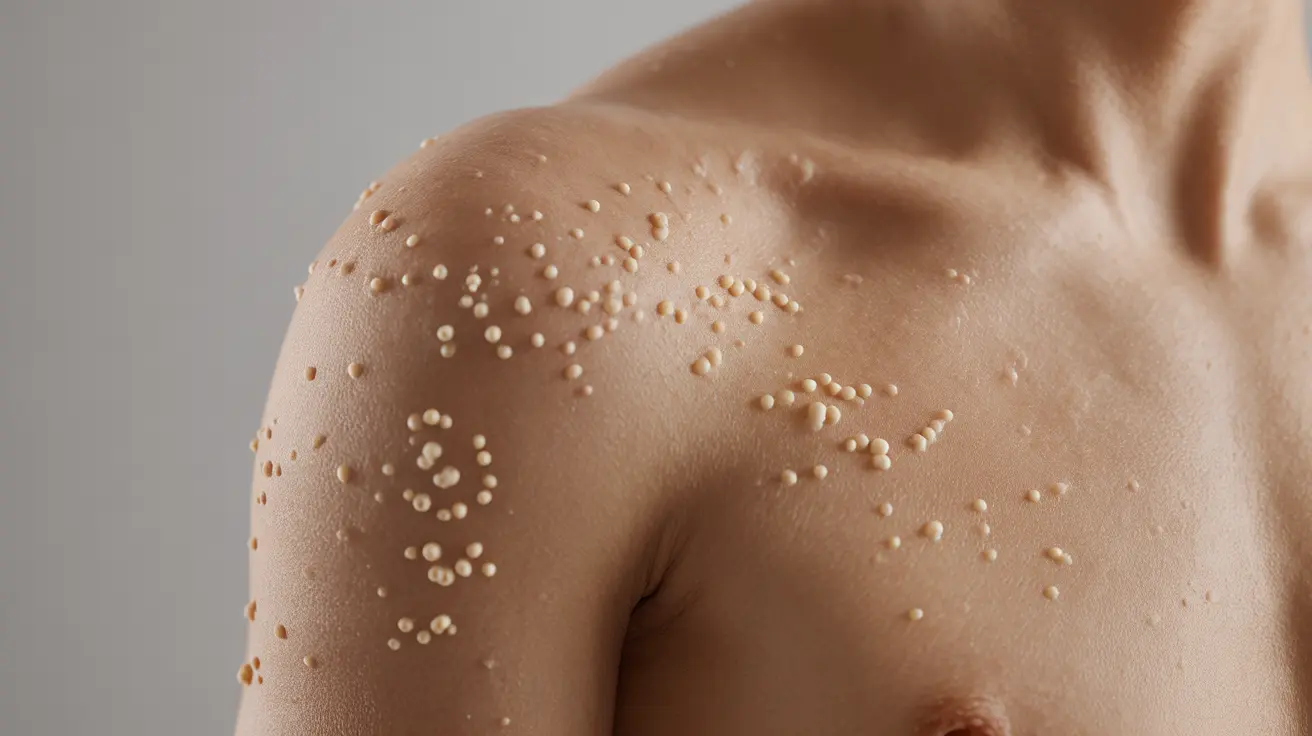Lichen nitidus is a relatively uncommon skin condition characterized by tiny, colorless, itchy bumps that can appear on various parts of the body. While these distinctive skin lesions may cause concern when first noticed, understanding their nature and available management options can help provide peace of mind for those affected.
This comprehensive guide explores the key aspects of lichen nitidus, from its characteristic appearance to treatment approaches, helping you better understand this benign but sometimes bothersome skin condition.
Identifying Lichen Nitidus
Lichen nitidus manifests as small, flesh-colored bumps that typically measure 1-2 millimeters in diameter. These bumps often appear in clusters and have a distinctive smooth, shiny surface. Common areas where these lesions appear include:
- The chest and abdomen
- Arms and forearms
- Genitals
- Inner thighs
- Hands and wrists
The bumps generally maintain a uniform appearance and size, making them relatively easy for healthcare providers to identify during examination.
Common Causes and Risk Factors
While the exact cause of lichen nitidus remains unclear, several factors have been associated with its development:
Immune System Response
Research suggests that lichen nitidus may result from an inflammatory immune response, though the specific trigger isn't fully understood.
Age and Demographics
The condition most commonly affects children and young adults, though it can occur at any age. There's no significant difference in occurrence between genders.
Associated Conditions
Some cases have been linked to other health conditions, including:
- Eczema
- Juvenile diabetes
- Crohn's disease
- HIV infection
Diagnosis Process
Healthcare providers typically diagnose lichen nitidus through:
Visual Examination
The distinctive appearance of the tiny, colorless, itchy bumps often allows for clinical diagnosis based on visual inspection alone.
Skin Biopsy
In some cases, particularly when the diagnosis is unclear, a small skin biopsy may be performed to confirm the condition and rule out other similar skin disorders.
Treatment Approaches
Many cases of lichen nitidus don't require specific treatment, as the condition often resolves on its own. However, when treatment is needed, options may include:
Topical Treatments
- Corticosteroid creams for inflammation
- Moisturizers for skin comfort
- Antihistamines for itching relief
Light Therapy
In some cases, phototherapy may be recommended for extensive or persistent cases.
Lifestyle Modifications
Simple measures like avoiding skin irritants and maintaining good skin care can help manage symptoms.
Frequently Asked Questions
What does lichen nitidus look like and where do the tiny colorless itchy bumps usually appear on the skin? Lichen nitidus appears as small, flesh-colored, shiny bumps typically 1-2mm in size. These bumps commonly appear on the chest, abdomen, arms, inner thighs, and genital area, often clustering together in groups.
What causes lichen nitidus and who is most at risk for developing these small flesh-colored bumps? While the exact cause isn't known, lichen nitidus is believed to be related to immune system responses. Children and young adults are most commonly affected, and it may be associated with conditions like eczema, diabetes, or immune disorders.
How is lichen nitidus diagnosed and how can it be distinguished from similar skin conditions? Diagnosis is typically made through visual examination by a healthcare provider, based on the characteristic appearance of uniform, small, shiny bumps. In some cases, a skin biopsy may be needed to confirm the diagnosis.
Does lichen nitidus require treatment, and what are the most effective options for managing itching or appearance concerns? Many cases don't require treatment as they resolve spontaneously. When treatment is needed, options include topical corticosteroids, antihistamines for itching, and phototherapy for extensive cases.
How long does lichen nitidus typically last, and can it cause long-term skin damage or scarring? Lichen nitidus usually resolves on its own within several months to years. It rarely causes long-term skin damage or scarring, and most cases clear up completely without leaving permanent marks.




